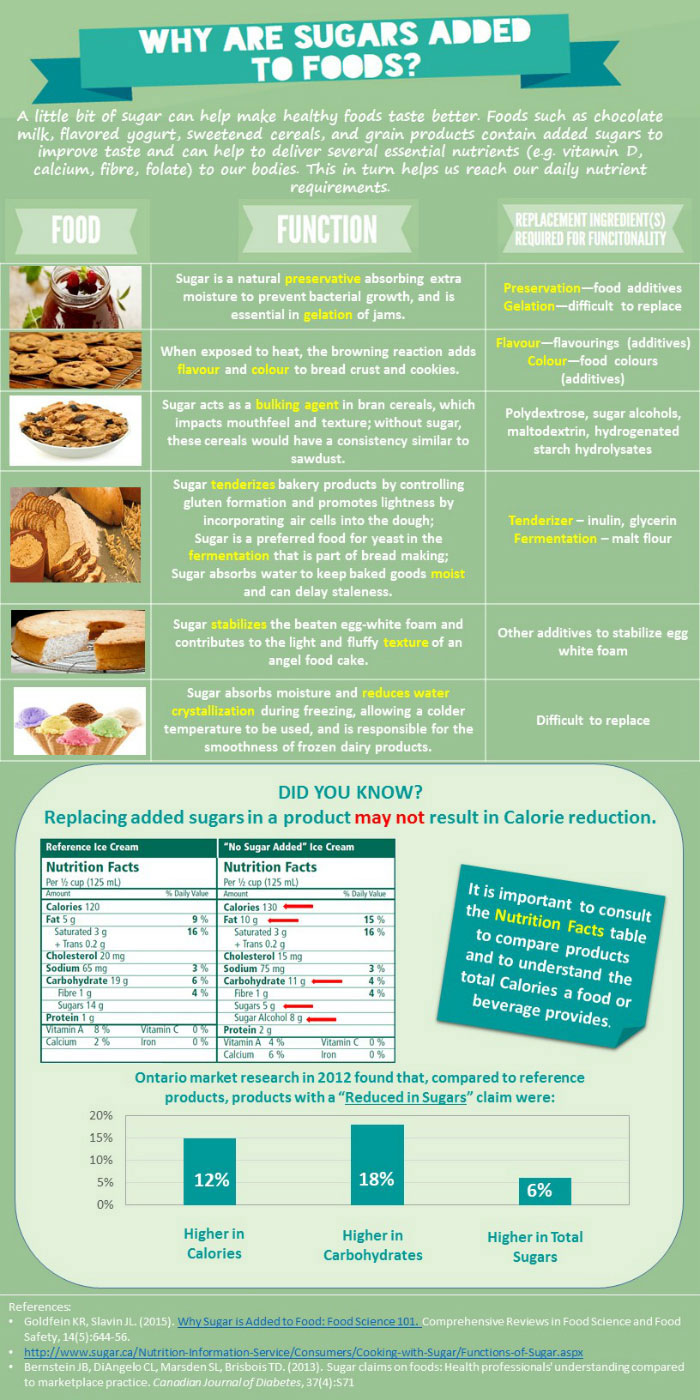Whats New
Why Sugar is Added to Food: Food Science 101
A critical review “Why Sugar is Added to Food: Food Science 101” by Goldfein KR & Slavin JL, recently published in Comprehensive Reviews in Food Science and Food Safety, highlights the variety of functions sugar (sucrose) plays in foods beyond sweetness. It demonstrates that replacing added sugars with alternative ingredients to achieve similar functional roles often does not result in a reduction in Calorie content or improvement in nutrient density. Goldfein and Slavin also discuss complex issues associated with the proposed added sugars labelling in the US such as insufficient accuracy to rely on manufacturers’ recipes and consumer confusion, among others.
Key topics discussed in the review:
- Sugars added to foods contribute to:
- Sweetness, flavour enhancement and flavour balance;
- Colour and flavour formation via caramelization and the Maillard reaction;
- Bulk and texture;
- Yeast fermentation;
- Preservation.
- Regardless of whether sugars are naturally occurring or added during food processing, the molecular structure and nutritional value is the same, providing 4 Calories per gram.
- An inconsistent definition of added sugars used in health claims (e.g. 100% fruit juice freshly squeezed or reconstituted from concentrates can claim “no added sugar”) as compared to nutrition labelling proposals (e.g., fruit juice concentrates with or without added water are considered added sugars) may cause consumer confusion.
- Difficulties in calculating added sugars content using manufacturers’ recipes for products subjected to fermentation, caramelization and Maillard reactions, leads to inaccurate declaration of added sugars content on labels and challenges for government enforcement.
- Product reformulation to reduce added sugars content may introduce more ingredients (e.g. carbohydrate-based bulking agents such as polydextrins, artificial sweeteners, food additives such as chemical preservatives, etc.), which are needed to replace sugar’s functional roles, but do not always offer reduced total Calorie content or improved nutrient density.
The complexity of sugar’s functional roles in foods and their corresponding replacement ingredients are depicted in the infographic below.



